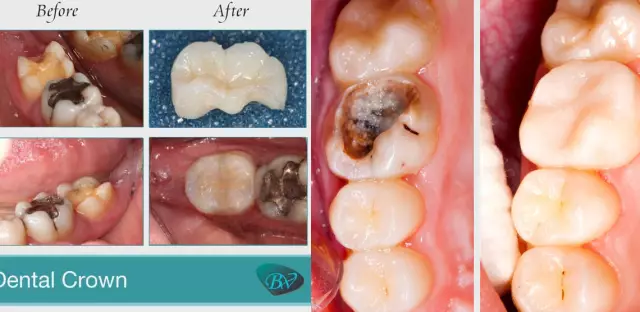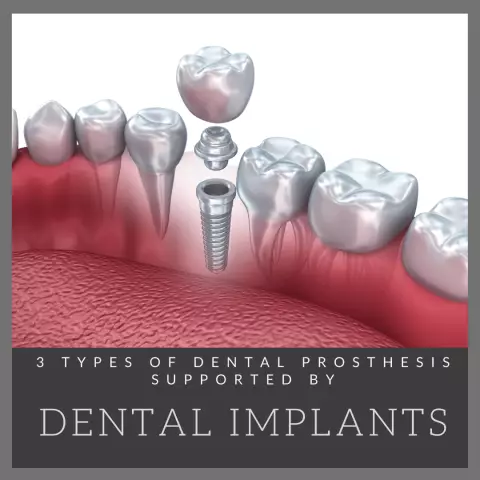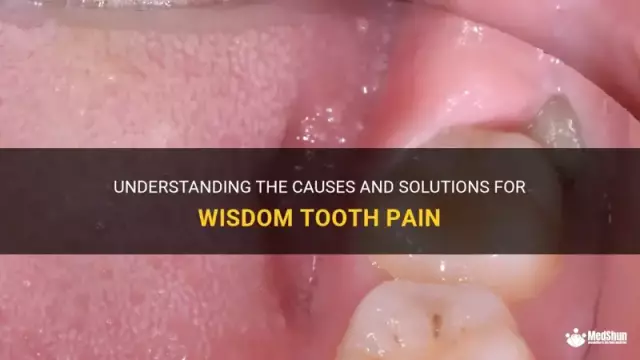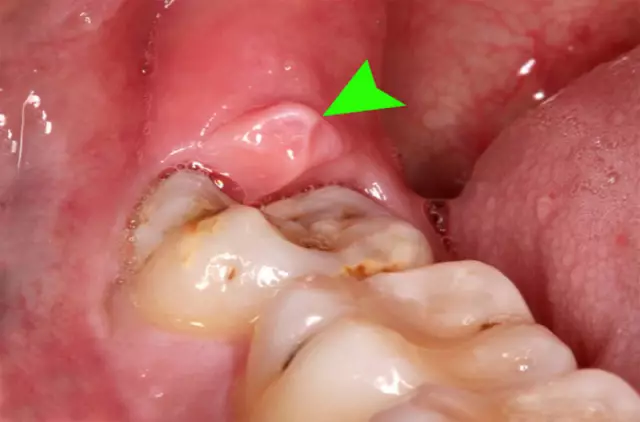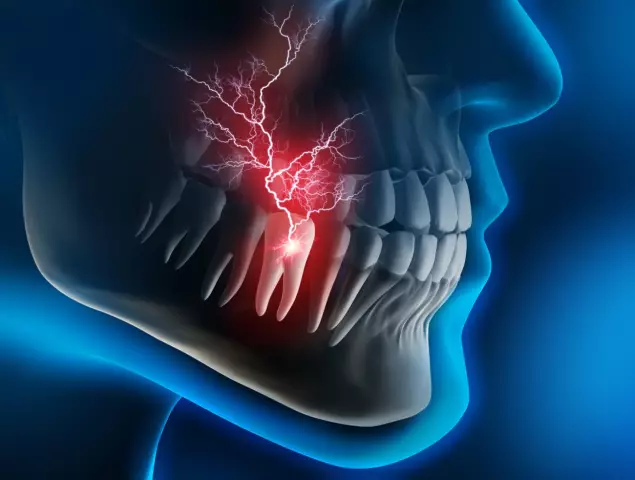- Author Rachel Wainwright [email protected].
- Public 2023-12-15 07:39.
- Last modified 2025-11-02 20:14.
What to do if a tooth hurts under the crown

If a tooth hurts under the crown, the reasons can be very different - from poor-quality preparation before prosthetics to the ingress of a foreign body into the canal being filled. Most often, it is possible to detect the problem only some time after the manufacture and installation of the prosthesis. Sometimes acute pain under the crown may not appear until several years later, but whenever it occurs, an urgent visit to the dentist is mandatory.
Why the tooth hurts under the crown: poor-quality preparation
Before installing a bridge or crown, the tooth is usually depulpated, that is, the nerve bundle is removed at the root, and then the canals are filled.
If the dentist does not work properly, two problems may arise:
- Firstly, the canal initially may not be completely cemented, that is, purulent contents accumulate at the root apex during inflammation (periodontitis). This leads to the fact that a depulpated tooth hurts under the crown, despite the previously removed nerve. This situation occurs when the dentist is not qualified to work with anatomically curved roots;
- Secondly, the cause of periodontitis can be low-quality materials, despite the complete filling of the canal. Over time, they change their physical properties and sag, as a result of which many voids and pores are found in the filling, into which infection easily gets.
Pain under the crown due to perforation of the root canal walls
Another prosthetic defect that explains why the tooth under the crown hurts is the perforation of the canal being filled, which occurs quite often. Its essence lies in the artificial creation of a hole that is a gateway for infectious agents. This can happen in the following cases:
- With mechanical expansion of a curved canal, when the dentist's instrument, as a result of pressure, passes through the tooth tissues, making holes in them. In this situation, the patient, even after installing the prosthesis, will feel pain under the crown, although the root canal is completely sealed along its entire length;
- If the post is incorrectly installed, which leads to inflammation in the deformed area and tangible pain in the restored tooth.
A tooth hurts under the crown due to the ingress of a foreign body
In the process of expanding the canals, the tip of the instrument may break off, and the doctor does not intentionally or deliberately fill the hole with it. Therefore, when a tooth hurts under the crown, the reasons may be:
- Failure to rotate dental instruments that cannot be rotated more than 120 ° inside the canal. Usually, due to ignoring this point of the rules, a breakdown of the expander is provoked due to the natural curvature of the tooth canals;
- The reuse of disposable instruments that doctors use to save money. After sterilization, the dilators can be used by the dentist several times, although they are intended for a single use;
- Fracture of the instrument due to anatomical anomalies of the tooth itself, when the roots are strongly curved and have difficult-to-pass canals.
Regardless of the reason, when eating hot or cold food, the patient will feel that a tooth hurts under the crown, characteristic pulsation and aggravation of discomfort when chewing, biting, pressing or tapping are also possible.
Before installing the prosthesis, it is imperative to take an X-ray of the jaw to make sure that there are no canal defects, cysts and instrument debris.
When a tooth hurts under a temporary crown
As mentioned above, preparation for prosthetics includes the preparation and grinding of hard tissues, as a result of which the root canals are exposed, which increases the risk of infection. Therefore, in order to avoid problems, a temporary crown is placed during the production of a permanent prosthesis, the task of which is to protect the tooth from external influences and bacteria. In addition, it relieves the patient from the inconvenience of eating and maintains aesthetics when smiling and talking.
If a tooth hurts under a temporary crown, this indicates untreated caries, poor-quality filling of canals, improper fit of the prosthesis, damage or loosening of the wall, as well as irregular oral care.
Toothache under the crown
The tactics of treating a tooth, both with a permanent and a temporary crown, are individual and are selected separately in each case.
The easiest option is to remove the prosthesis and subsequent debridement, but in this case, it is impossible to put on the same crown again, since it is irreversibly deformed.
Today, there are methods of treatment in which it is not necessary to break a denture:
- Pain in a living tooth. In this case, acute pain occurs, as well as a strong sensitivity to cold or hot food, which means the development of a carious process. The doctor removes the damaged tissue through a hole drilled from the chewing side of the prosthesis, and then closes it with a permanent filling;
- Pain in the prepared tooth. If a pulped tooth under the crown hurts, then aching sensations appear that radiate to the temple and ear, which is an exacerbation of chronic periodontitis. In this case, the tactics of treatment depends on the presence or absence of the pin. If the root canal is simply sealed, then, having opened the crown, it can be cleaned, the medicine can be put in, and a permanent filling can be installed at the next visit to the doctor after removing the inflammation. When the tooth is attached to a pin, periodontitis can only be cured with the help of a root apex resection operation. In this surgical procedure, an incision is made in the gum through which the inflammation is removed.

If food gets under the denture, this indicates an unsuccessful installation or deformation. The tooth hurts under the crown, and the gums become very inflamed. It is possible to relieve symptoms without removing the prosthesis for a while, but to completely get rid of the problem, you will need to completely remove the crown, and possibly the entire tooth.
So these are the main treatment options. However, it is worth noting that the dentist, depending on the tactics chosen, may face some problems. For example, with the inability to remove the post without damaging the tooth, tissue perforation during refilling, or the duration of treatment, which in chronic periodontitis can last up to three months.
YouTube video related to the article:
Found a mistake in the text? Select it and press Ctrl + Enter.

